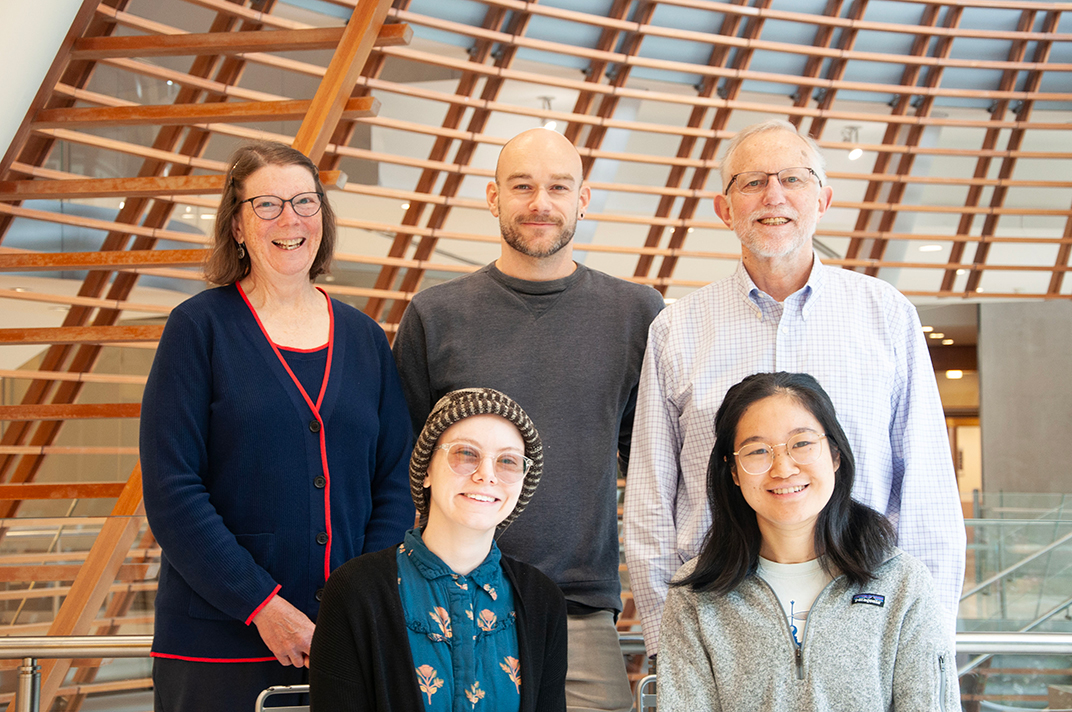Tick-Borne Disease
Progress in Development of a Live Attenuated Vaccine for Powassan Virus



Posted November 7, 2023
Margaret MacDonald, M.D., Ph.D., The Rockefeller University
Powassan virus, abbreviated POWV, is a tick-borne virus with potential to cause severe disease when humans are bitten by an infected tick. One lineage of POWV, also known as deer tick virus, or DTV for short, is transmitted through infected blacklegged or deer ticks, the same ticks that spread Lyme disease, anaplasmosis, and babesiosis to humans. Although reported cases of illness due to POWV are relatively rare, disease incidence is on the rise due to the expanding geographic range of host ticks.1 Most documented cases of POWV disease are in the northeast and Great Lakes regions of the United States.2
Symptoms of POWV disease range from fever and headache to severe infections of the brain, known as encephalitis, or of the protective membranes covering the brain and spinal cord, known as meningitis, which can be lethal. There are currently no treatment options to eradicate POWV once it is contracted. Cases exhibiting mild symptoms are prescribed rest and pain medication, while severe cases may require hospitalization or intervention to reduce brain swelling. After treatment of symptoms, many patients say they experience long-term problems with their physical and mental health.2
Effective prevention measures can help to mitigate the risk of POWV infection and any related, long-term symptoms. POWV is a flavivirus with a positive, single-stranded RNA genome and an outermost layer, known as an envelope. During infection host recognition of the virus plays an important role in a host's immune response. The envelope serves as a protective layer for the viral genetic material inside while also housing specific POWV proteins that interact with host cells. Many viruses evade detection by preventing recognition and binding of the zinc-finger antiviral protein, or ZAP, an antiviral host factor. Thus, understanding how POWV and other viruses in the same family, like yellow fever and West Nile, interact with the host immune system can aid in developing vaccine strategies.

Margaret MacDonald, Ph.D., from The Rockefeller University, (left) and her research team received a fiscal year 2018 award from the Tick-Borne Disease Research Program, making initial steps toward developing the first live, attenuated vaccine to prevent Powassan virus infection and disease. Standing next to MacDonald in the back row, left to right, is Hans-Heinrich Hoffman, Ph.D., Charles "Charlie” Rice, Ph.D., and seated in the front row is Corrine Quirk (left) and Elaine Yip (right). Not featured in this photo is a member of the research team, Andrew Cheung. (Photo Provided)
With a fiscal year 2018 award from the Tick-Borne Disease Research Program,
First, MacDonald's team recoded the POWV genome to increase its susceptibility to ZAP and the innate immune response. However, this method did not show promising results for attenuation of the virus, eliminating it as a safe vaccination approach. Next, they used an already successful flavivirus vaccine for yellow fever virus, called YFV-17D, as a vector by replacing the genetic material encoding for the prM-E proteins of YFV-17D with that of DTV. This approach allowed for the safe delivery of a viral chimera, a virus comprised of genetic material from
In testing the capabilities of the chimeric virus to produce the DTV proteins, while maintaining a non-disease-causing behavior, MacDonald and her team developed three different vaccination protocols in mouse models. Following vaccination, DTV infection, and monitoring for disease symptoms, study results indicated that the chimeric vaccine is effective in mitigating infection, with the protocol involving an additional envelope domain protein boost being most effective.
The viral genetic constructs and chimeras generated during this research are useful tools for other researchers investigating flaviviruses. Overall, this vaccine development effort is a step toward mitigating the effects of human POWV infection by using new approaches to effectively prevent POWV disease.
Publication:
Cheung AM, Yip EZ, Ashbrook AW, et al. 2023. Characterization of live-attenuated Powassan virus vaccine candidates identifies an efficacious prime-boost strategy for mitigating Powassan virus disease in a murine model. Vaccines 11(3):612. https://doi.org/10.3390/vaccines11030612
References:
1Beard CB, Eisen L, and Eisen RJ. 2021. The Rise of Ticks and Tickborne Diseases in the United States - Introduction. J Med Entomol 58:1487-1489.
https://doi.org/10.1093/jme/tjab064
2Powassan virus. Centers for Disease Control and Prevention. https://www.cdc.gov/powassan/index.html
Links:
Public and Technical Abstracts: Development of a Live Attenuated Powassan Virus Vaccine
Last updated Friday, March 7, 2025














